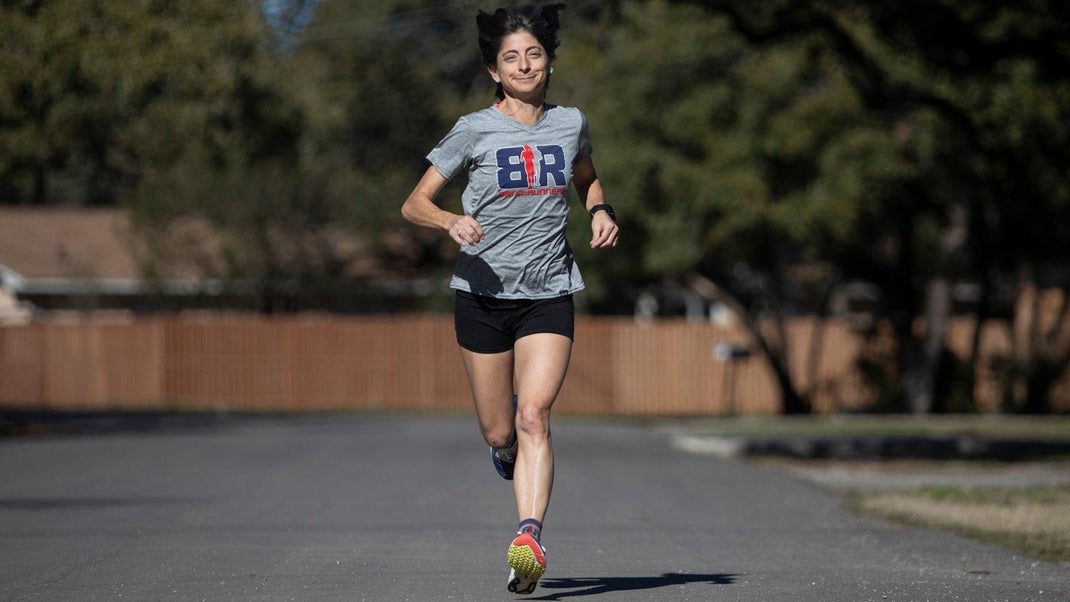Tips From Liza Howard On Dialing In Training With Age

“There’s still the same desire to see what my particular body is capable of. And, you know, as my body gets older, to see what’s possible,” Liza Howard said in a recent iRunFar “Age-Old Runners” Zoom interview.
A year and a half in and 18 interviews later, Howard, who is normally the one asking the questions in the “Age-Old Runners” article series, had the spotlight turned on her. The conversation with the 49-year-old runner revealed training insights that were worthy of sharing.
A bit more about Howard: She is a wilderness first aid instructor, nonprofit leader, mom, and has a 100-mile PR of 15:07.
Here are five ways Howard’s training has changed since she started running in her early twenties.
She is consistent.
Over the last 10 years Howard has become more consistent all across the board when it comes to training.
“Like most of the age-group folks I’ve interviewed in this series, I dot my i’s and cross my t’s much more than before,” she says.
That includes a dialed in sleep schedule; daily yoga, core work, and bodyweight strength training (except on Sundays); and maintaining 70 miles per week in running volume.
She incorporates speed work.
In her 20’s and 30’s, Howard didn’t do any speed work—something she’s much more consistent with now. Before, she would run with various training partners and just do whatever workout they were doing without regard to what she needed.
“I could maintain a moderate pace without having to make moderate feel easy. It just felt easy. Now speedwork is necessary for me to maintain where I want to be running in a way that it wasn’t previously,” she said.
She relies on others.
Following the lead of friends and running partners has helped Howard accomplish as much as she has. Other people can be great motivators to get you out of your comfort zone, especially when training gets stagnant.
It was a friend who convinced Howard to run the Grand Canyon Rim-to-Rim-to-Rim, followed by her first trail race. Her trail running group talked her into training for her first 50K, then a 50 miler, then a 100K.
The pandemic really drove home the notion for her that she is motivated by other people. This past year she ran a lot, she said, “but I learned that I need to run with people who are faster than me in order to push myself really hard.”
She learned how crucial joy and excitement are in running.
While doing this series, Howard hoped she’d find what the magical elixir for running well while aging would be. Something like: “Oh look, everyone’s drinking a cup of maple syrup in the morning. I’ll do that,” she joked.
But the common thread amongst all her interviewees and even herself was excitement and joyfulness (“about racing, the community, and pushing themselves”) as a catalyst for longevity in the sport.
RELATED: Masters Athletes Can Reduce Performance Declines with High-Intensity Workouts
One of her biggest takeaways from the article series and interviewing age-group runners: “For a lot of folks, there’s this cognitive dissonance between their age and how they feel.” And yet, there is a negative stigma in almost all of society, including running, about aging.
“The cultural expectations about what’s physically possible are a lot to carry around while you’re training. The message “your time is over” becomes harder and harder not to believe,” she said.
She hopes that more coverage of Masters and age-group runners will help people learn what runners really are capable of and maybe even convince older adults to try the sport. “If you see a bunch of folks doing these extraordinary things, you’re going to think, My body’s not that much different.”
RELATED READING: